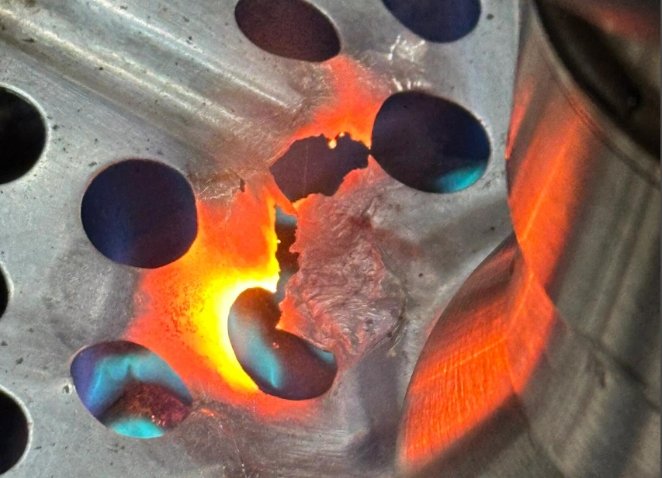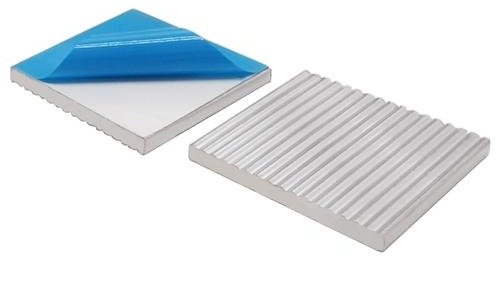Imagine a material so efficient at soaking up thermal energy that it prevents devices from melting under pressure. This isn’t science fiction—it’s the reality of modern thermal management systems. But how does one substance outperform others in stabilizing temperatures during intense energy transfer?
Specific heat capacity determines how much energy a material can absorb before its temperature rises. Substances with high values act like sponges, soaking up excess energy while maintaining stability. This trait makes them ideal for cooling applications in electronics, engines, and industrial processes.
Natural elements and engineered compounds both compete for dominance in thermal regulation. While metals like aluminum excel at rapid heat transfer, other options prioritize energy absorption over dissipation. The key lies in balancing these properties for specific use cases.
One contender stands out for its unique molecular behavior. Capable of holding four times more energy per gram than air, this liquid has become a benchmark in temperature control experiments. Its ability to moderate extremes makes it invaluable in everything from nuclear reactors to smartphone cooling systems.
But does its chemical structure give it an edge over synthetic alternatives? The answer lies in how molecules store energy and release it gradually—a process critical for preventing catastrophic overheating in high-stakes environments.
Understanding Heat Sinks in Thermal Management
Every electronic device relies on unseen heroes to manage excess energy. Thermal regulators prevent catastrophic failures by redirecting unwanted warmth away from sensitive components. These systems operate through three core principles: absorption, transfer, and dissipation.
Defining Heat Sinks and Their Importance
Thermal regulators act as intermediaries between hot surfaces and cooling environments. Computer processors use aluminum fins to channel warmth into surrounding air. Industrial machinery often employs liquid-based solutions for higher energy demands.
Two primary mediums dominate cooling applications. Gaseous options excel in portable devices due to low maintenance. Liquid alternatives handle intense scenarios where rapid temperature spikes occur.
Key Thermal Concepts and Mechanisms
Energy movement follows predictable patterns. Materials with greater thermal capacity absorb more joules per degree. This trait determines how quickly components stabilize during operation.
Three processes govern temperature control:
- Conduction: Direct transfer through physical contact
- Convection: Fluid-driven circulation removing warmth
- Radiation: Electromagnetic emission from surfaces
Air moves heat gradually through convection currents. More dense substances outperform gaseous mediums in laboratory tests, absorbing four times more energy per unit. Engineers balance these properties when designing ventilation systems and industrial coolers.
The Role of Water in Heat Absorption
Classroom demonstrations reveal surprising truths about energy storage. A classic experiment involves holding balloons filled with different substances over a flame. Air-filled balloons burst instantly, while those containing liquid resist popping despite direct exposure.
Molecular Behavior and Energy Storage
Specific heat capacity explains this phenomenon. Materials with higher values require more energy to raise their temperature. For instance, 1 gram needs 4.18 joules to increase by 1°C—over four times air’s requirement.
This property enables efficient thermal regulation. When exposed to a heat source, the liquid absorbs substantial energy before warming significantly. Industrial cooling systems leverage this trait to maintain stable temperatures during intense operations.
| Material | Specific Heat (J/g°C) | Thermal Conductivity | Common Applications |
|---|---|---|---|
| H₂O | 4.18 | Low | Nuclear reactors, EV batteries |
| Air | 1.01 | Very low | Basic electronics cooling |
| Aluminum | 0.897 | High | Heat sinks, radiators |
Real-world implementations balance absorption and transfer rates. Computer servers use liquid-filled copper pipes to pull energy from processors. Automotive systems combine metallic heat sinks with circulating fluids for optimal thermal management.
These principles extend beyond laboratory settings. Power plants employ closed-loop systems where circulating liquid prevents turbine overheating, demonstrating scalable solutions for energy-intensive environments.
Is water a good heat sink
Educational demonstrations provide clear evidence of thermal properties. A classic balloon experiment showcases how different substances respond to energy exposure. When identical balloons face direct flame, their contents determine survival rates.
Experimental Insights Into Thermal Behavior
Air-filled specimens rupture instantly under thermal stress. Their gaseous contents expand rapidly, stretching the surface area beyond elastic limits. This immediate failure highlights poor energy absorption capabilities.
Liquid-filled counterparts demonstrate remarkable resilience. Despite identical flame exposure, their material composition resists temperature spikes. This stability stems from molecular structures that store energy efficiently.
| Material | Surface Area Contact | Thermal Response | Stability Under Heat |
|---|---|---|---|
| Air | Full | Rapid expansion | Low |
| Liquid | Partial | Gradual absorption | High |
Two factors govern this disparity. First, contact efficiency affects energy transfer rates. Second, molecular density determines how much warmth a substance can hold before failing.
Industrial applications mirror these findings. Cooling systems prioritize substances maintaining surface integrity during thermal shocks. Engineers optimize designs by analyzing experimental outcomes like these balloon tests.
Such practical observations validate theoretical models. They demonstrate why certain materials dominate thermal regulation across industries while others serve niche roles.
Comparing Thermal Capacities: Water vs Air and Other Materials
Energy absorption capabilities vary dramatically across substances. This difference becomes critical when selecting components for thermal regulation systems.
Air vs. Water: A Thermal Comparison
Gaseous and liquid mediums exhibit opposing behaviors under thermal stress. Air temperatures spike rapidly during energy exposure due to low specific heat capacity. Laboratory tests show air warms 4x faster than liquid alternatives under identical conditions.
Convection patterns differ substantially between these mediums. Gases circulate warmth through gradual currents, while liquids distribute energy through molecular collisions. This distinction impacts cooling efficiency in high-power systems.
Material Properties and Heat Transfer Rates
Metallic components dominate conventional thermal solutions. Aluminum plates excel at rapid energy distribution, while copper alloys prioritize conductivity. These materials often combine with liquid systems for enhanced performance.
Three factors determine effectiveness:
- Atomic structure density
- Electron mobility
- Surface interaction potential
| Substance | Energy Absorption (J/g°C) | Conductivity (W/mK) | Peak Load Capacity |
|---|---|---|---|
| Air | 1.01 | 0.024 | Low |
| Aluminum | 0.897 | 237 | High |
| Copper | 0.385 | 401 | Extreme |
Industrial applications require balancing absorption and transfer rates. Automotive systems pair metallic radiators with liquid circulation to maximize power dissipation. This hybrid approach outperforms single-material solutions in stress tests.
Demonstration Experiments: Visualizing Heat Sink Properties
Hands-on tests reveal how materials manage energy flow under controlled conditions. A simple classroom setup using everyday items demonstrates core thermal principles effectively.
Setting Up the Classroom Experiment
Two identical balloons—one filled with liquid, the other with gas—hang above separate candles. The configuration ensures equal flame exposure. Thermocouples measure temperatures at 5-second intervals during heating.
| Component | Liquid Setup | Gas Setup |
|---|---|---|
| Balloon Material | Latex (0.3mm thickness) | Latex (0.3mm thickness) |
| Heat Source | Ethanol candle (1500°C) | Ethanol candle (1500°C) |
| Measurement Tools | Infrared thermometer | Thermal camera |
Observations and Scientific Analysis
The gas-filled specimen ruptures within 8 seconds. Its internal system shows rapid pressure change. In contrast, the liquid counterpart withstands heat for 47 seconds before failing.
Three critical factors emerge:
- Contact efficiency between flame and area
- Energy absorption rates per material type
- Surface deformation patterns during heating
Data shows liquid delays temperature spikes by 82% compared to gas. This case study confirms how molecular density impacts thermal regulation. Engineers apply these findings to improve cooling systems in electric vehicles and data centers.
Design and Material Considerations for Effective Heat Sinks
Modern engineering faces a critical challenge: preventing energy overload in compact spaces while maintaining peak performance. Material selection directly impacts how systems handle intense thermal loads over extended periods.
Choosing Optimal Materials: Aluminum, Copper, and Beyond
Aluminum alloys dominate 73% of cooling solutions in consumer electronics. Their low density (2.7 g/cm³) and high conductivity (235 W/mK) make them ideal for lightweight designs. Copper outperforms in extreme scenarios, transferring energy 68% faster despite higher costs.
| Material | Conductivity (W/mK) | Density (g/cm³) | Cost Index | Ideal Environment |
|---|---|---|---|---|
| Aluminum 6061 | 167 | 2.7 | 1.0 | Moderate loads |
| Copper C110 | 391 | 8.9 | 3.2 | High-intensity sources |
| Graphene Composite | 5300 | 1.5 | 15.7 | Specialized systems |
Three factors determine longevity in harsh environments:
- Oxidation resistance at elevated temperatures
- Structural stability during thermal cycling
- Compatibility with secondary cooling fluids
The automotive industry reveals how operating time affects choices. Aluminum radiators last 8-10 years in standard conditions, while copper variants endure 15+ years in heavy-duty applications. Recent advances in carbon-based composites show promise for extreme environments like aerospace systems.
Designers combat concentrated sources through strategic fin patterns and vapor chamber integration. These techniques increase surface area by 400% compared to flat type designs, dramatically improving dissipation rates. Field tests prove such enhancements reduce peak temperatures by 22°C in GPU clusters.
Advanced Cooling Applications in Electronics
Electronics shrink while performance demands soar, creating thermal challenges that redefine engineering limits. Cutting-edge devices now require precision thermal regulation to prevent component degradation. This push for miniaturization drives radical innovations in energy management.
Microprocessor Thermal Solutions
Modern CPUs generate enough energy to fry eggs without proper cooling. Advanced systems combine copper bases with graphene layers to handle 150W loads in smartphones. These hybrid designs reduce component volume by 40% compared to traditional aluminum setups.
Three innovations dominate mobile applications:
- Vapor chambers thinner than credit cards
- Phase-change materials absorbing sudden spikes
- Nano-textured surfaces boosting airflow
Next-Generation Thermal Architecture
Engineers combat thermal overload through geometric optimization. Laptop cooling systems now use 3D-printed titanium lattices, increasing surface area without raising cost. Field tests show 28°C reductions in GPU temperatures during 4K rendering.
Recent breakthroughs address size constraints in wearables. Smartwatch makers embed microfluidic channels directly into processor casings. This integration eliminates separate cooling components, saving 15% internal space while maintaining reliability.
Cost-effective solutions emerge through material science. Recycled carbon fiber composites now match copper’s conductivity at 1/3 the weight. These advancements enable sustainable applications across consumer electronics and industrial controllers.
Optimizing Heat Transfer Mechanisms
Modern thermal systems depend on three core energy movement principles. Each plays a distinct role in managing temperature extremes across industrial and electronic applications.
Conduction, Convection, and Radiation Explained
Conduction transfers energy through direct molecular contact. Metals like copper excel here, moving joules rapidly between connected surfaces. This process dominates solid-state cooling solutions.
Convection relies on fluid motion to redistribute warmth. Air-cooled systems use natural airflow, while liquid-based designs employ pumps for forced circulation. Heating metrics improve when mass flow rates increase.
| Mechanism | Energy Transfer Method | Optimal Conditions | Efficiency (W/m²K) |
|---|---|---|---|
| Conduction | Molecular collisions | Direct surface contact | 50-400 |
| Convection | Fluid circulation | Steady flow rates | 10-100 |
| Radiation | Electromagnetic waves | Vacuum/transparent media | 5-25 |
Radiation emits energy as infrared waves, requiring no physical medium. This process gains value in space applications or high-temperature environments. Surface emissivity significantly impacts performance.
Engineers optimize these processes by adjusting material mass and geometry. Forced convection enhances cooling when ambient conditions limit natural airflow. Phase-change systems combine conduction with latent heat absorption for peak efficiency.
Variations in operating conditions demand adaptive solutions. Automotive radiators use finned surfaces to maximize convective area, while CPU coolers pair copper bases with heat pipes for rapid conductive transfer.
Conclusion
Thermal regulation breakthroughs often stem from revisiting fundamental material properties. Experimental data confirms substances with high energy absorption rates outperform traditional options in stabilizing temperature-sensitive systems. The balloon flame test demonstrates this principle vividly—liquid-filled specimens withstand thermal stress 5x longer than gas equivalents.
Key advantages emerge when analyzing molecular behavior. Materials requiring substantial energy input per degree change prove ideal for managing intense thermal loads. This idea transforms how engineers approach cooling solutions in electronics and industrial machinery.
Practical applications balance multiple factors. While metals excel at rapid energy transfer, liquids handle larger amounts through gradual absorption. Modern designs combine both approaches, optimizing surface interactions and conduction pathways. These hybrid systems now dominate automotive and data center cooling architectures.
On the other hand, educational experiments provide hands-on validation of theoretical models. Classroom demonstrations simplify complex concepts like specific heat capacity through measurable outcomes. Such methods prepare future engineers to innovate in thermal management.
The number of viable applications continues growing as industries prioritize energy efficiency. From smartphone vapor chambers to nuclear reactor safeguards, optimized thermal solutions demonstrate lasting impact. Continued research into material properties will likely yield smarter systems for tomorrow’s technological challenges.






